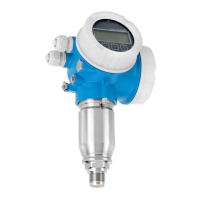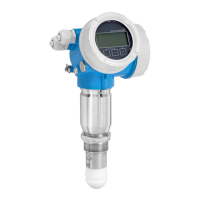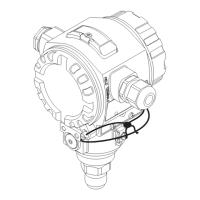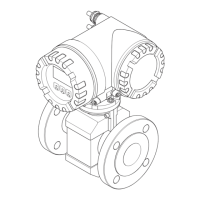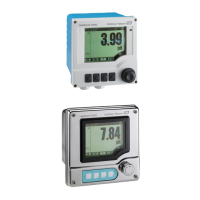Micropilot FMR56, FMR57
Endress+Hauser 7
Function and system design
Measuring principle
The Micropilot is a "downward-looking" measuring system, operating based on the time-of-flight
method (ToF). It measures the distance from the reference point R (process connection of the
measuring device) to the product surface. Radar pulses are emitted by an antenna, reflected off the
product surface and received again by the radar system.
A0017872
1 Setup parameters of the Micropilot
R Reference point of the measurement (lower edge of the flange or threaded connection)
E Empty calibration ( = zero)
F Full calibration (= span)
D Measured distance
L Level (L = E - D)
Input
The reflected radar impulses are received by the antenna and transmitted into the electronics. A
microprocessor evaluates the signals and identifies the level echo caused by the reflection of the
radar pulses at the product surface. The unambiguous signal identification is accomplished by the
PulseMaster® eXact software together with the Multi-echo tracking algorithms, based on over 30
years of experience with time-of-flight technology.
The distance D to the product surface is proportional to the time of flight t of the impulse:
D = c · t/2,
with c being the speed of light.
Based on the known empty distance E, the level L is calculated:
L = E – D
The Micropilot is equipped with functions to suppress interference echoes. The user can activate
these functions. Together with the multi-echo tracking algorithms they ensure that interference
echoes, e.g. from from internal fixtures and struts, are not interpreted as level echoes.

